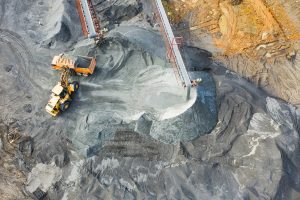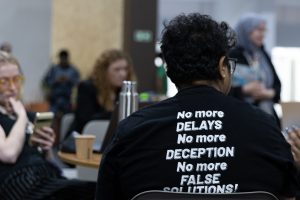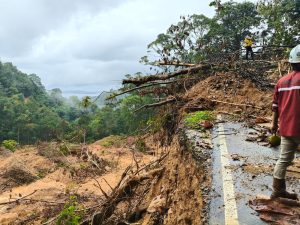Jakarta — Scientists and policymakers said the country needs a clear governance system and a strong regulatory framework to protect Indonesia’s mangrove and to sustain its blue carbon economy.
The workshop “Science at Medan Merdeka: The Economic Value of Blue Carbon and Indonesian Leadership”, organised by the Indonesian Academy of Sciences (AIPI), held in Jakarta on Tuesday, October 14, gathered scientists and policymakers to discuss how Indonesia can unlock the economic potential of its blue carbon reserves while ensuring social equity and ecological integrity.
Indonesia, home to the world’s largest mangrove forests and vast coastal ecosystems, is seeking to position itself as a global leader in the blue carbon market. This emerging mechanism values the carbon captured and stored by marine and coastal ecosystems such as mangroves and seagrasses.
Properly valuing Indonesia’s carbon
Coordinating Minister for Economic Affairs Airlangga Hartarto said Indonesia could earn up to USD 565.9 billion (around IDR 8,000 trillion) from carbon trade in forests, mangroves, and peatlands if it could sell credits at USD 5 per ton of CO₂e, as cited by AIPI in an accompanying statement. Yet, they said the country’s carbon price remains among the world’s lowest—around USD 1 per ton of CO₂e, compared to Uruguay’s USD 167 or Japan’s USD 400 for seaweed-based carbon credits.
“Five dollars per ton is far too cheap,” Prof. Daniel Murdiyarso, Principal Scientist at CIFOR-ICRAF and AIPI Chair, told the audience at the event. “We need a clear governance system and strong regulations. Preventing deforestation and degradation should be rewarded appropriately, because restoring damaged mangroves is much more costly than protecting existing ones.”
Murdiyarso said that improving market trust and stakeholder capacity, especially among coastal communities, is crucial for ensuring high-quality and scientifically credible carbon projects. He added that Indonesia must strengthen monitoring, reporting, and verification (MRV) systems aligned with international standards and ensure consistent legal frameworks to sustain its blue carbon economy.
Minister of Environment and Forestry Hanif Faisol Nurofiq echoed the call, noting that Indonesia has taken major steps to boost its competitiveness in carbon trading. These include signing a Mutual Recognition Agreement (MRA) between Indonesia’s Greenhouse Gas Emission Reduction Certification (SPEI) and Verra’s Verified Carbon Standard (VCS), a Letter of Intent with Puro.earth, and guidance for project developers pursuing Gold Standard for Global Goals (GS4GG) certification.
These measures build on Indonesia’s earlier successes under the REDD+ program, which secured result-based payments from the Green Climate Fund (USD 103.8 million), the Forest Carbon Partnership Facility (USD 180 million), and result-based contributions from Norway (USD 216 million). Indonesia has also incorporated below-ground mangrove carbon into its national Forest Reference Level to access future payments.
Minister Hanif stressed the importance of turning comparative advantages into competitive ones, saying, “The future of Indonesia’s carbon trade will depend on the credibility and integrity of our carbon market. None of us must commit fraud that could damage the integrity of Indonesia’s carbon system.”
Looking ahead to the UN Climate Change Conference (COP30) in Brazil next month — home to the world’s second-largest mangrove area — both Hanif and Murdiyarso expressed optimism that mangrove conservation and blue carbon will take centre stage. They said Indonesia is ready to showcase its progress and advocate for a fair and credible global blue carbon market.
In his conclusion, Murdiyarso said that blue carbon is not only about emission reduction, but also about resilience — ensuring that coastal communities thrive alongside healthy ecosystems. “Indonesia should demonstrate leadership in shaping an equitable and science-based global blue carbon trade,” he said. (nsh)
Banner photo: Prof. Daniel Murdiyarso, Chief Scientist at CIFOR-ICRAF and AIPI Chair (Source: AIPI Indonesia YouTube channel screenshot)
Update: 15 Oct. 2025, 19.35. Revising correct position of Prof. Murdiyarso as CIFOR-ICRAF Principal Scientist.















